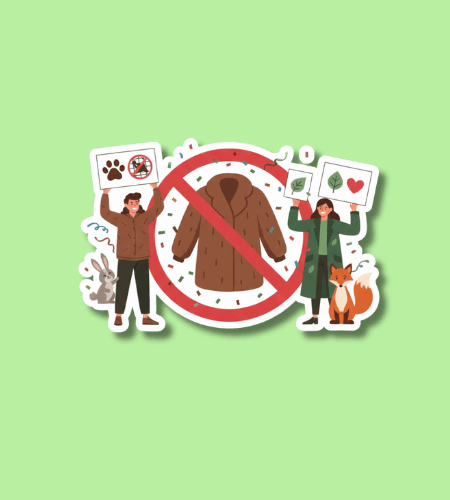Fur-Free Friday, observed annually on the Friday after Thanksgiving (also known as Black Friday), is a day of global-action organized by animal-welfare groups to raise awareness about the cruelty of the fur-trade and encourage consumers to avoid buying real-fur clothing and accessories.
Table of Contents
History of Fur-Free Friday
The roots of Fur-Free Friday stretch back to the mid-1980s in the United States, when activists targeted major retail stores on Black Friday with non-violent protests against the sale of fur.
Over time the day evolved into a coordinated global campaign under names like “Worldwide Fur Free Friday (WFFF)”, with demonstrations, educational events and calls to retailers around the world to adopt fur-free policies.
Why is Fur-Free Friday important?
Fur-Free Friday is important for two key reasons: first, it places a spotlight on the suffering of animals in the fur-industry—often kept in small cages, exposed to cruelty and killed for their pelts. Second, it provides a specific moment during the major shopping day of the year to challenge fashion-industry norms and encourage more ethical consumer choices.
- It raises awareness about the hidden cruelty in the fur supply chain.
- It links consumer behavior (buying fur) to animal suffering.
- It empowers individuals to make a difference through choices and advocacy.
- It encourages retailers and brands to adopt fur-free commitments.
- It aligns with broader ethical and sustainability-movements in fashion and retail.
How to Participate in Fur-Free Friday
Participating in Fur-Free Friday can be meaningful whether you join a demonstration or take quieter personal actions. If possible, you might join a local protest or outreach event organized by animal-welfare groups. Alternatively, you can use the day to review your wardrobe, check labels, and commit to avoiding real-fur purchases.
Here are a few practical steps you can take on Fur-Free Friday:
- Refuse to buy any item labeled “real fur,” “genuine fur,” or “animal fur,” and question retailers if unsure.
- Choose faux-fur or animal-friendly alternatives when shopping for outerwear, accessories, or trim.
- Support fashion brands that explicitly promote “fur-free” policies and ethical sourcing.
- Share information on social-media about the cruelty of the fur trade, using hashtags or tagging storefronts to call for change.
- Contact local stores or policymakers to ask for fur-sale bans or fur-free retail commitments in your community.
Subscribe to our newsletter and never miss a holiday again!

